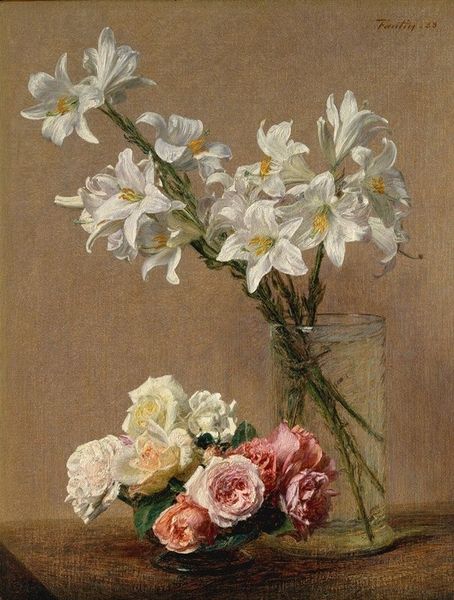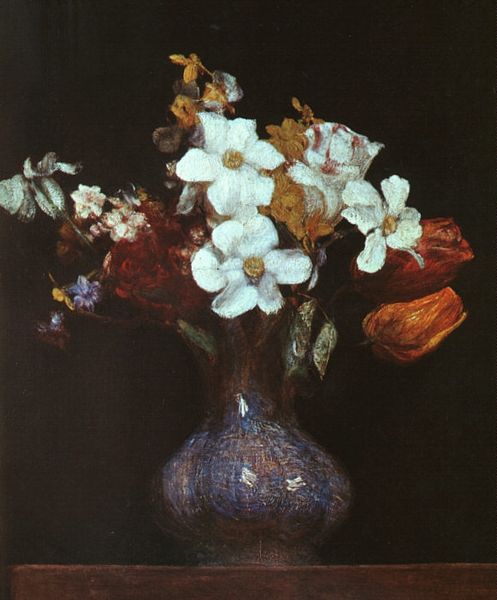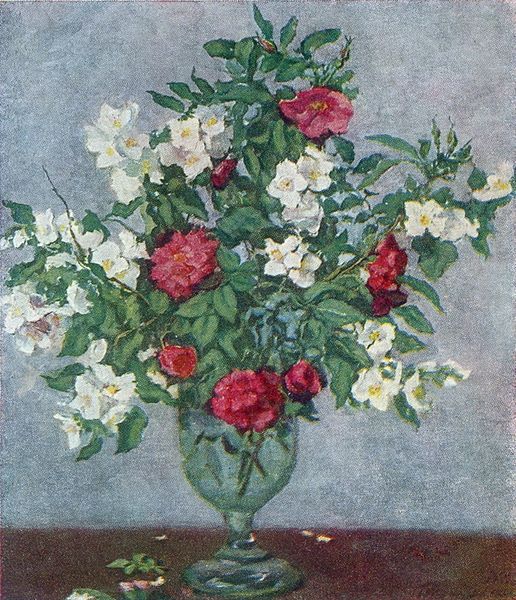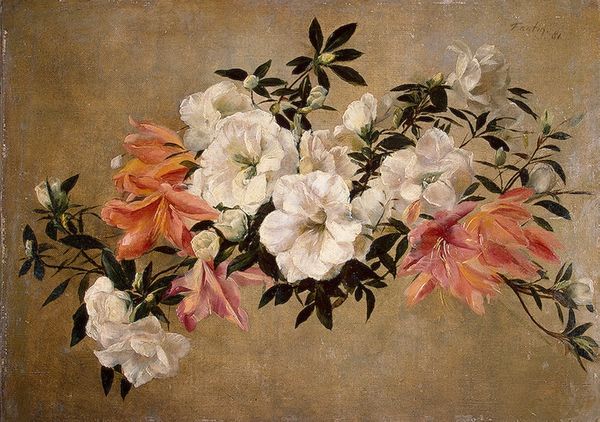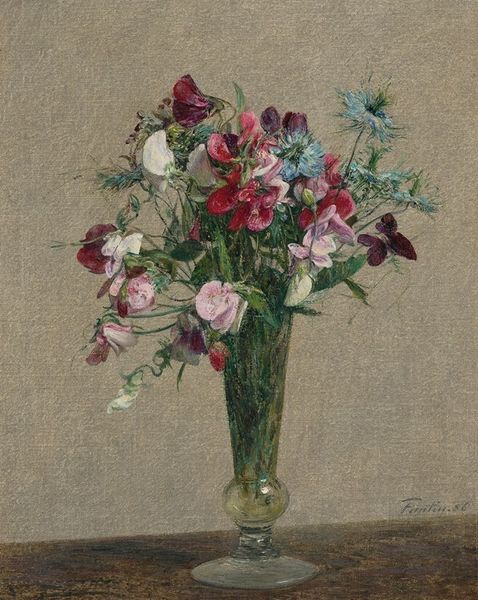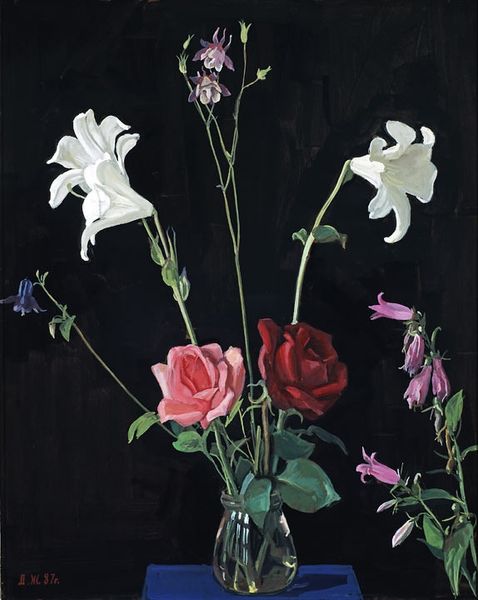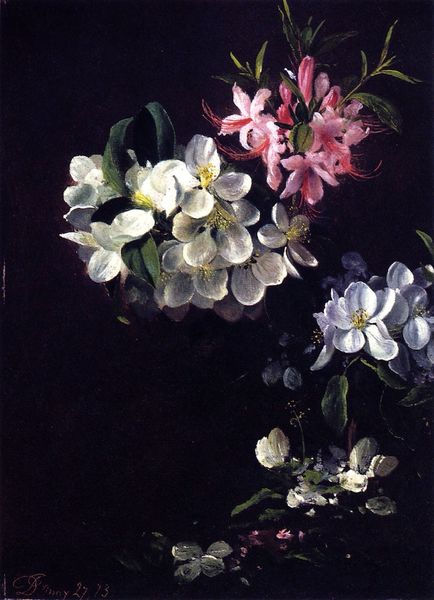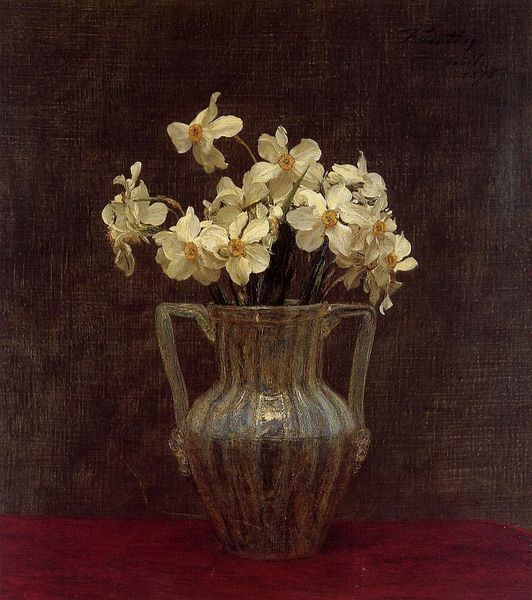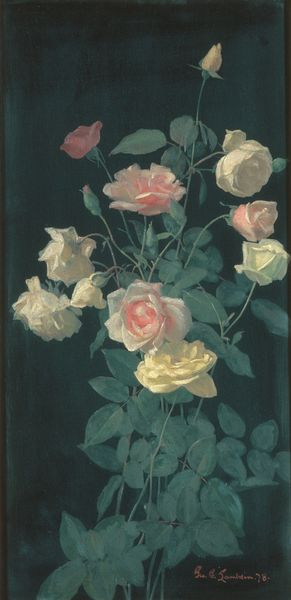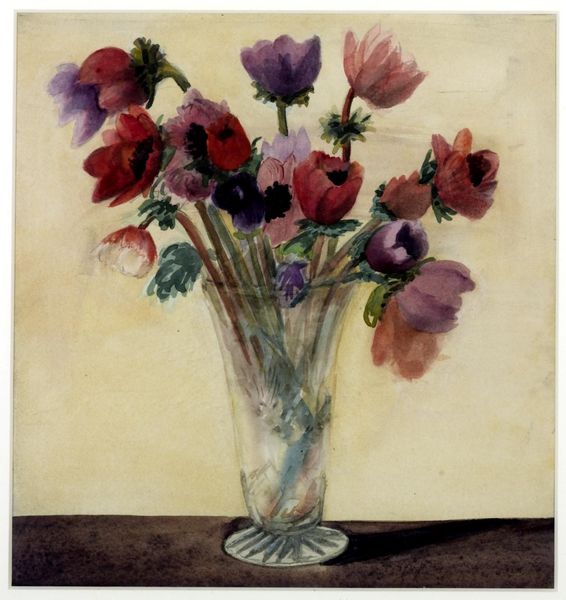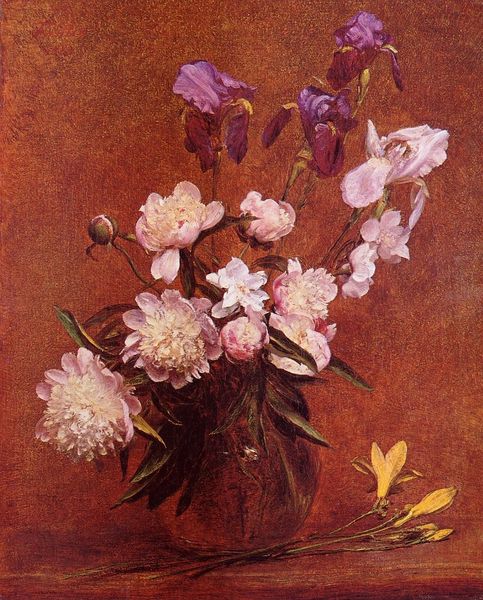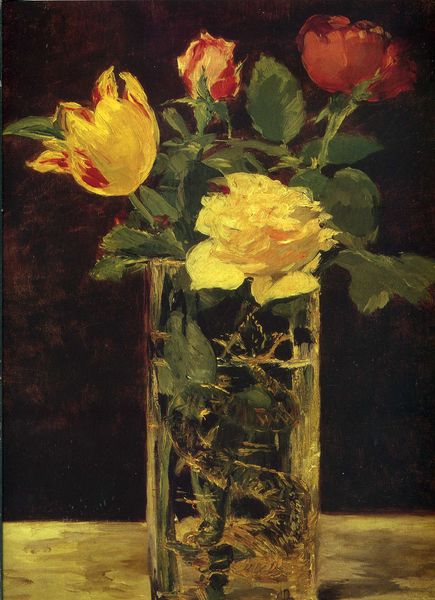
painting, photography, watercolor
#
still-life
#
gouache
#
painting
#
impressionism
#
landscape
#
photography
#
watercolor
#
plant
#
realism
Dimensions: 58 x 38 cm
Copyright: Public domain
Art Historian: Welcome. Before us hangs Henri Fantin-Latour’s “Japanese Anemones,” created in 1884. Fantin-Latour, known for his flower paintings and group portraits, straddled the worlds of Impressionism and Realism in late 19th-century Paris. Curator: What strikes me immediately is the soft, almost muted luminosity of these white flowers against that subtly gradated grey-green background. There’s a stillness, a quietude, achieved through the delicate balance of light and shadow, that’s quite compelling. Art Historian: Fantin-Latour’s still lifes were highly sought after by the English market. This commercial demand significantly influenced his choice of subject matter, even pushing him to create many flower paintings in order to sell them. This popularity allowed him artistic freedom for other work. Curator: Absolutely, though I see more than mere commercialism here. The careful arrangement of the blooms, some fully open, others in bud, and that elegant, elongated vase. These elements aren’t captured in a photorealistic manner, and reveal his use of Impressionist techniques through how he blends realism with subtle expressiveness. Art Historian: The interest in Japanese aesthetics was a defining factor in European art, influencing art styles and cultural perceptions widely at the time. These "Japanese Anemones" can be placed among a variety of works referencing Japonisme at the time. Curator: Look at how the stems, just visible through the glass, dissolve into a play of reflected light. The execution displays the formal values over explicit narrative, emphasizing that fleeting moment when light defines form, blurring it into abstraction at its edges. Art Historian: Indeed. Still life painting allowed artists like Fantin-Latour to explore the cultural appetite of collectors during shifting aesthetic standards and growing markets for art. He occupies a place reflecting Realism's disciplined study while approaching newer expressive modes. Curator: I see. The arrangement presents a kind of melancholic beauty, evoking contemplation as his manipulation of muted color elicits emotion that surpasses just documenting form. Art Historian: Considering all this I am reminded that Fantin-Latour’s flower paintings captured something unique about the era’s sensibility as markets and cultures began to interconnect even more than before. Curator: A fitting reflection. He transforms something ordinary into the realm of poetry, through composition and paint quality, making us consider his subjective reality over objective recording.
Comments
No comments
Be the first to comment and join the conversation on the ultimate creative platform.
